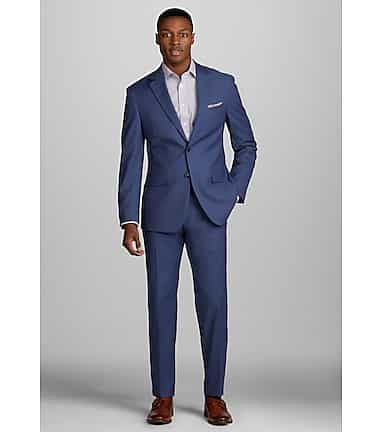Tailor Tuxedos Perth: Custom Tuxedos for Unique Occasions
Tailor Tuxedos Perth: Custom Tuxedos for Unique Occasions
Blog Article
Understanding the Tailoring Process: From Material Choice to Final Suitable for the Ideal Closet
The customizing process is a complicated interplay of art and scientific research, starting with the essential choice of textile option and culminating in the exact adjustments of last installations. Each material type brings distinct top qualities that affect not just the visual allure however also the garment's durability and suitability for various events.
Value of Fabric Choice
Selecting the best fabric is crucial in the tailoring process, as it straight affects the comfort, resilience, and total aesthetic of the final garment. The choice of textile sets the structure for the garment's performance, functionality, and design. Various fabrics have special residential properties, such as breathability, stretch, and weight, which can substantially affect just how the garment drapes and fits the body.

A tailored piece made from a proper textile not just showcases workmanship but likewise boosts the wearer's confidence. Subsequently, understanding the nuances of fabric choice is vital for any type of customizing undertaking. It guarantees that the end product not only satisfies the aesthetic desires of the client but also aligns with functional demands, consequently achieving a harmonious balance between form and feature in the customized closet.
Sorts Of Fabrics and Their Uses
Recognizing the numerous sorts of textiles available is crucial for making educated decisions during the customizing process. Each textile has special characteristics that determine its viability for certain garments and celebrations.
Cotton, known for its breathability and soft qualities, is ideal for informal wear and summer season garments. Its flexibility enables it to be tailored right into everything from t shirts to dresses. Woollen, on the various other hand, is preferred for its heat and framework, making it a superb selection for formal fits and outerwear. Its natural flexibility aids garments keep form in time.
Silk exudes luxury and is lightweight, making it best for eveningwear and fragile shirts; nonetheless, it requires careful handling because of its delicacy. Bed linen, with its distinctive surface, is a prominent option for cozy environments, offering a crisp and airy feeling, yet it wrinkles easily, which may affect the garment's look.
Artificial materials, such as polyester and nylon, deal longevity and resistance to wrinkles, making them suitable for everyday wear and active clothing. Comprehending these fabric types and their residential or commercial properties permits better decision-making, making certain that each tailored item not just fits well but likewise aligns with the designated objective and occasion.
The Tailoring Methods Clarified
The art of tailoring depends on a selection of techniques that transform material into well-fitted garments. Central to this process is pattern composing, where a dressmaker creates themes based upon the client's measurements and preferred design. This initial step makes certain that the garment will fit the user properly before any kind of cutting happens.
As soon as patterns are established, cutting techniques enter into play. Precision is critical as mistakes can bring about misfitting garments. Tailors frequently use different reducing approaches, such as single-layer cutting for complex layouts and multiple-layer cutting for effectiveness on standard patterns.
Basting is another vital method, enabling dressmakers to momentarily sew textile items with each other for an initial installation (top tailor perth). This method provides the opportunity to evaluate the drape and overall silhouette before final sewing
Seaming strategies, consisting of flat-felled joints and French joints, improve the garment's toughness and visual allure. Tailors additionally utilize techniques such as interfacing and cushioning to provide structure and shape to particular locations, like collars and shoulders.
Last but not least, finishing methods, consisting of hemming and side ending up, make certain the garment's longevity while offering a sleek appearance. Together, these techniques develop the backbone of effective tailoring, causing elegant, custom-fit apparel.

Fitting Modifications and Factors To Consider
After the preliminary tailoring methods have been applied and the garment is created, fitting changes become extremely important to achieving the excellent fit. These adjustments attend to various aspects of the garment, guaranteeing it contours to the wearer's physique and boosts general look.

The increase of trousers best site is another vital element; it ought to sit conveniently above the hips without causing pain, permitting convenience of activity. Hemming sizes for both pants and skirts ought to reflect the wearer's recommended design while valuing percentages.
Furthermore, attention should be provided to the rear of the garment, making certain that there are no unattractive pulls or excess material - bespoke tailor perth. Each modification ought to be meticulously considered, as also minor alterations can significantly influence the general Our site fit and aesthetic of the customized piece, ultimately bring about a closet that radiates confidence and refinement
Preserving Your Tailored Wardrobe
Constantly adhere to the treatment label directions, which may suggest completely dry cleaning for fragile fabrics or maker washing for even more resilient products. Avoid regular laundering, as this can put on down the textile and change the garment's form.
Storage is similarly vital; use cushioned wall mounts for jackets and coats to keep shoulder structure, and store trousers folded nicely or hung to stop creasing. Safeguard garments from straight sunlight, which can fade colors and damages fibers.
Furthermore, periodic examinations for minor fixings can stop larger issues. Look for loose switches, fraying joints, or indicators of moth damage, dealing with these problems quickly to maintain the garment's integrity.
Lastly, consider seasonal rotation. Wearing tailored items in small amounts permits textiles to recoup, expanding their life expectancy. By carrying out these upkeep methods, you can make sure that your tailored garments stay as beautiful as the day you first wore them, boosting your excellent closet for many look these up years to find.
Final Thought
The customizing process, incorporating fabric option, proficient techniques, and specific fitting changes, plays an important role in producing garments that enhance both convenience and design. Comprehending the importance of maintenance expands the life of tailored garments, strengthening their value in a well-curated closet.
Report this page